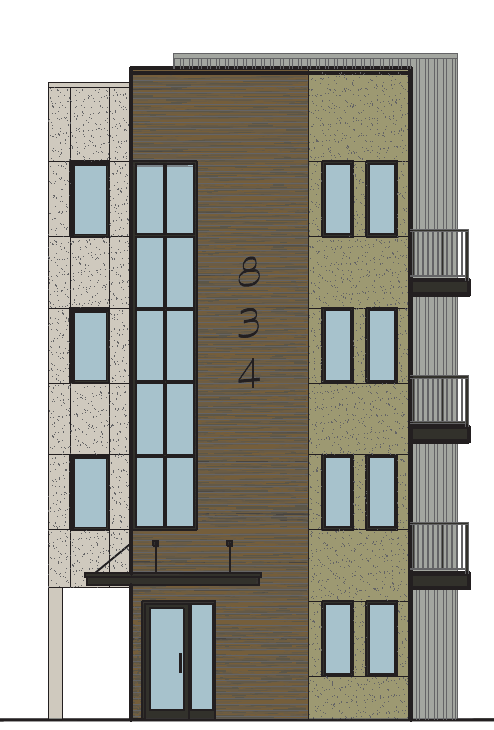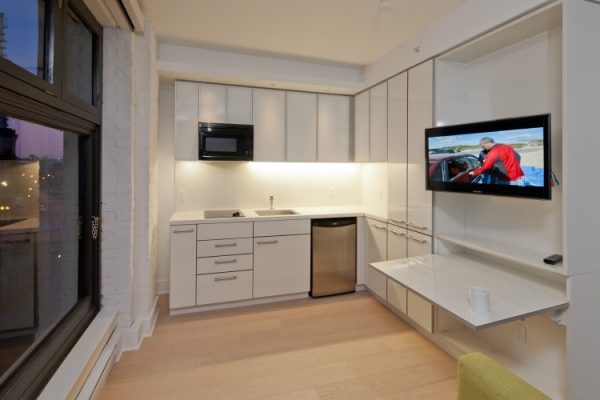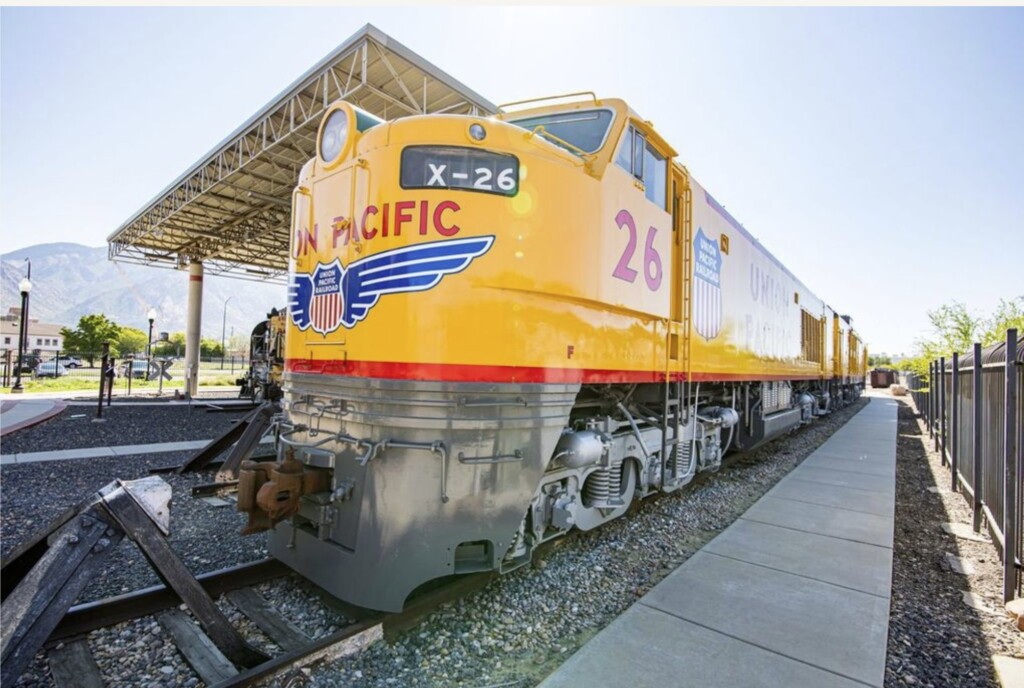 Steve Ruf learned early in his search for financing that “affordable housing” can be a subjective term to bankers. “They said, ‘Who’d want to live in this?’” Steve laughs, as he recounts his conversations with lenders. But the Orem-based developer persisted, and he expects to rent units in the first of two apartment buildings in May.
Steve Ruf learned early in his search for financing that “affordable housing” can be a subjective term to bankers. “They said, ‘Who’d want to live in this?’” Steve laughs, as he recounts his conversations with lenders. But the Orem-based developer persisted, and he expects to rent units in the first of two apartment buildings in May.
Greenprint Apartments, located on the 800 South block of 200 West, represents a new trend in micro-unit affordable housing. Each of the two buildings will have 60 apartments ranging in size from about 250–350 square feet. “They’re not very large,” Steve acknowledges, “but people can afford it.” Monthly rents are expected to be between $700 and $800.
Steve saw this new style of housing in other cities, such as Seattle and Portland. He thought the urban design made matter-of-fact good business sense, and believes that Salt Lake’s housing circumstances favor this kind of development, noting the city’s “hot market and low vacancy” status. Steve anticipates that the concept, enhanced by its location, will attract a predictable demographic, which points back to the question: Who’d want to live in this?
Steve imagines his target renters will be 18–30 year-old single professionals or students who want to live in an urban environment with easy access to public transportation. The size of the units also assumes that would-be renters may prefer a minimalist lifestyle, an ideology that’s been a topic in the national simple living conversation.
Living with less doesn’t mean having less. 21st-century minimalists consciously focus on culling the essential possessions from the non-essential, and this new breed of non-materialists may also shift their energy from consuming and managing personal property to finding meaning by engaging in life’s intangible but important aspects. That’s a lot of life-philosophy to pack into 300 square feet, but Steve thinks the developing values of a younger generation will translate to full occupancy. “We could have a thousand units and they’d be filled,” he says confidently.
Steve also anticipates potential renters will appreciate Greenprint’s energy efficiency. “We couldn’t fit solar on the roof,” he says, “but we’ve basically done everything we could to make it efficient.”
Construction includes a high-efficiency HVAC system, luxury vinyl tile flooring, low-flow shower heads and “probably” Energy Star appliances. The two apartment buildings will have a total of 12 ADA compliant units for tenants with disabilities.
In a society that broadcasts the message “More is more,” it will be interesting to note who chooses the “Less is more” lifestyle.
One thing we know here at the magazine is that Utah Stories is the right size to complement one of Greenprint’s apartments.
Ruf Associates is accepting applications, and those interested in applying for a unit may contact Steve at steve@rufassociates.com .



